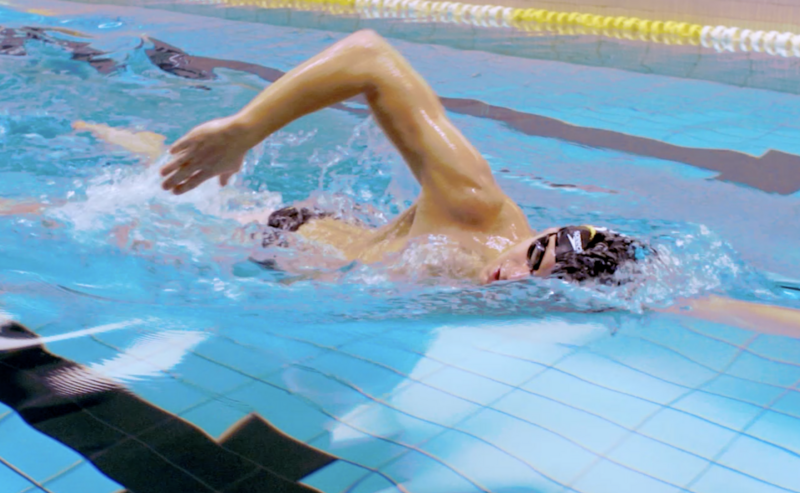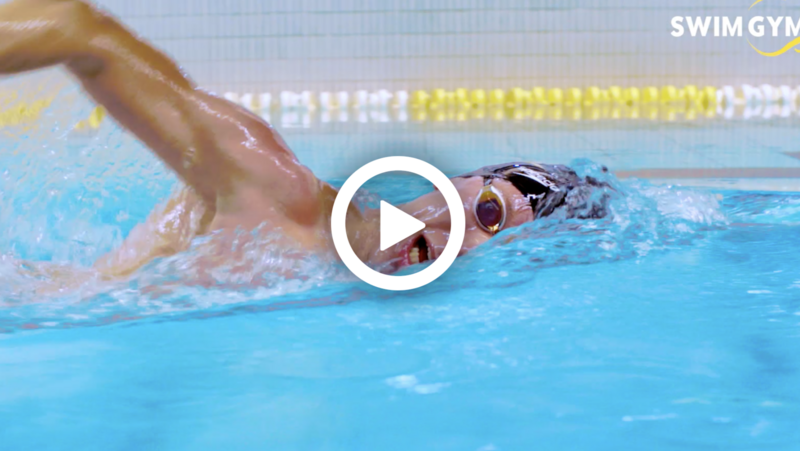Swimming blog - BREATHING Benefits of breathing to both sides
Controversy in the swimming universe doesn’t get bigger than this. To be Bi or not to be! By Bi, we mean are you a bilateral breather or not? ‘Bilateral’ refers to breathing to both sides, of course. Why does bilateral breathing improve your stroke? It might just be the key to a perfectly balanced freestyle.
Bilateral breathing will improve your freestyle stroke by making it symmetrical. A mirror image if you wish. What the one side does the other will do too. This should be the goal of every freestyle swimmer. Stroke acquisition and or correction is all about learning movements that can be duplicated on both sides equally to maximise propulsion. What better way to start than rotating the body to the left and right equally?
(blog continues under link image)
Thus, bilateral breathing promotes good body rotation. When we breathe, we naturally rotate more to the side we are breathing on, as the head moves to that same side and gives our body more freedom to rotate. Breathing to both sides means we are constantly and consistently practicing that rotation. The body roll, sidekick and alternating sidekick drills are perfect to practice this. Check out the drills here.
Good body rotation encourages a more correct and natural arm recovery. The hip moving out of the way as we rotate gives the hand space to exit naturally and allow the elbow to lead the recovery. Poor body rotation on one or both sides will lead to a low, swinging recovery arm out the side.
The swinging arm’s momentum causes us to cross over the center line on hand entry. Crossing over the center line moves our body left and right snaking us through the water. This right and left movement unbalances us in the water making it necessary to balance our bodies out with a scissor kick. The legs will splay out behind us like a parachute, breaking our forward movement.
Furthermore, a crossover at the front of the stroke tends to lead to a dropped elbow making the catch very difficult and reducing the amount of propulsion that can be generated. This is a very inefficient way of swimming and could be easily prevented by learning to breathe bilaterally.
Breathing bilaterally is normally done every three strokes. This is a perfect rhythm for breathing out into the water and staying calm while swimming. People who have problems breathing bilaterally, have breathing problems. They are not exhaling into the water. So bilateral breathing becomes a great way to learn how to exhale into the water. See our breathing tutorial and become relaxed in the water.

However, bilateral breathing is not only and exclusively limited to breathing every three strokes. It is any breathing regime that allows for breathing to both sides. For instance, it could be 25m breathing to one side and 25m to the other side, this is still bilateral breathing. It could be a whole lot of variations, but the main focus is to breathe regularly to both sides.
This then is the goal of bilateral breathing: stroke symmetry and the ability to breathe to both sides naturally and comfortably. What side you choose to breathe to when swimming in competition will then become a matter of preference, not necessity. And the reason why elite swimmers breathe unilaterally; they have a preference, but you bet your bottom dollar that they all train bi-laterally.
There are two sides to a coin and in swimming we encourage you to use both sides.
